|
When you think about animal shelters, who do you presume is the best person to lead the shelter in terms of overall qualifications? Compassion for animals is a given in terms of prerequisites, but what about education and skills? Are some people better suited to manage the challenges of animal shelters from budgeting to staffing to leadership to animal care to interacting with the public? The short answer is yes. I work in a city in which the shelter director, a city department head appointed by the mayor, is a veterinarian. She was appointed to that position by the prior mayor in the fall of 2002, more than twenty years ago. When I first interacted with her, I didn't think much about her role at the shelter beyond her qualifications as a veterinarian. I thought it must be a good thing to have someone specialized in animal care in charge of the department. I have been told numerous times by local elected officials over a period of two decades that they are certain the shelter director would not needlessly destroy animals. If animals die in the shelter, the logic goes, there must be no way to keep them alive. I was talking with a contact of mine recently about the most important element of the No Kill Equation, the absence of which causes all the other elements to be less effective: compassionate leadership. I was reminded of a blog written by Mike Fry of No Kill Learning many years ago and about which he spoke at our 2013 No Kill Huntsville public workshop at the downtown library: core competencies for animal shelter leadership. Mike has decades of experience in the animal shelter industry, but he also spent time working at the Center for Creative Leadership for Dr. Mike Lombardo and Bob Eichinger. Mike used scientific data about 67 leadership core competencies to apply that data to the animal shelter field. He surveyed dozens of people who were either successful shelter directors, board members who oversaw successful shelters, or other knowledgeable persons. Based on the feedback, he ranked the 67 competencies and listed the top 22 "must have" skills for animal shelter leadership. The 22 must have skills Mike ranked are:
As Mike wrote in his blog, many boards and municipal administrators select leaders using the wrong criteria and end up putting people in roles for which they are poorly suited. I could not agree more. I know some animal shelter directors with no advanced animal care skills who achieve wonderful results in their shelters and communities by balancing public safety with animal welfare to achieve tremendous life-saving success using contracted veterinary care. I know a particular shelter director who is well-thought of in the business world, is held in extremely high regard by the public and has a multi-million dollar budget, but who destroys about half of the animals in her facility. I attribute this to lack of some of the core competencies at the top of the list while at the same time having personality traits that make her more focused on herself and her public persona than on the lives of the animals entrusted to her care. All animal shelters need to contract with or otherwise receive animal care services from a veterinarian. But "veterinary knowledge" is not one of the core competencies for animal shelter leadership. Does it help to have some fundamental knowledge of animal care that is acquired over time? Certainly. In the end, the job of a shelter director is administrative in nature. It is not a veterinary job. Job descriptions for shelter directors vary greatly, but many include the following key tasks:
I feel confident there are animal shelters led by veterinarians that function well. I would argue, however, those veterinary talents are wasted in what is an administrative position. I also believe there can be a downside to having a veterinarian manage a shelter that I call Snow White Syndrome. Think of the innocent animal lover frolicking in the woods being serenaded by birds as she interacts with animals of the forest. People presume that because veterinarians have chosen a profession related to animal care, they surely are focused solely on the well-being of animals and would not destroy healthy and treatable animals needlessly. As the saying goes, "this ain't no fairy tale" and there are numerous veterinarians who end the lives of healthy and treatable shelter animals every day. I'm not sure how they do it beyond the same type of rationalization that is used by shelter employees and volunteers which I consider a form of cognitive dissonance. There is no "do no harm" oath for veterinarians, but they do take an oath to use their knowledge to protect animal health and welfare. The oath states: Being admitted to the profession of veterinary medicine, I solemnly swear to use my scientific knowledge and skills for the benefit of society through the protection of animal health and welfare, the prevention and relief of animal suffering, the conservation of animal resources, the promotion of public health, and the advancement of medical knowledge. It has been argued that veterinarians who manage shelters where healthy and treatable animals are killed (or which contract with shelters to kill healthy and treatable animals) have violated that oath. Dr. Patty Khuly wrote a blog on this very subject in 2015 which I have shared many times. She stated: Killing healthy animals violates our oath. Therefore, we shouldn't do it. In fact, I'd go so far as to say that veterinarians who are directly involved in the shelter death of healthy animals should do so at the risk of losing their license to practice veterinary medicine. As I continue to advocate for shelter reform in the city where I work, my personal experience is that having a veterinarian manage the animal shelter has been an obstacle to change. People want to assume that a veterinarian would never needlessly end lives. But for many, many years, she did just that. Thousands of healthy and treatable animals were destroyed. The good news is that the loss of life slowed temporarily and the live release rate rose dramatically as a result of political advocacy, intervention by other city officials and demands by the animal loving public. If the shelter director had the core competencies required to effectively run the animal shelter - and was truly committed to the life-saving process - the progress achieved would be sustained. The bad news is that the progress has not been sustained and the city is now backsliding to a degree while rationalizing that decline. The reasons for the decline are varied but many relate to the futility of doing the same thing over and over, expecting a different result. Numerous recommendations have been made for years to help reduce shelter intake and increase shelter output, most of which would cost nothing at all, yet most have been ignored. This has caused me and the members of my local No Kill advocacy group to seek a local Companion Animal Protect Act to codify some of the shelter operations and standards in an effort to hold the line against further regression. Time will tell if we succeed. If we do not, the city will have made a choice regarding future operation of the animal shelter and will have decided that better is good enough under the current leadership. This process is made harder when the elected officials with whom we interact state now, as has been stated many times over a period of almost 20 years, that as a veterinarian, surely the shelter director would not end the lives of animals needlessly.
For more information regarding the role of veterinarians related to animal shelters, I encourage you to read this recent Substack article by Nathan Winograd called "Who Decides?" For information regarding decisions related to euthanasia in animal shelters, please refer to this Animal Evaluation Matrix.
0 Comments
I received an email on Friday from a shelter volunteer notifying me of some dogs at a local animal shelter who had been destroyed that day for "behavior." As of Thursday, the dogs were all still available for adoption or to be pulled by a rescue group. As of Friday, they were dead. This led me to what I can only describe as a moment of absolute clarity, thanks to something written by fellow No Kill advocate Eileen McFall of Austin, Texas. She had written to Don Bland, the Chief Animal Services Officer for the City of Austin about a dog scheduled to die in which she questioned how a dog could be adoptable one day and dead the next. In looking at the images of the local dogs who are now dead, I had to wonder: at exactly what point does any dog destroyed for what is called "behavior" go from being adoptable to having behavior issues so great they cannot be overcome?
If the dog is scheduled to die on the 30th day for displaying behavior issues but no rescue group or adopter steps up on day 29 to save the dog and the dog is killed, how can that dog have been destroyed for what can honestly be called "behavior"? It cannot. And we can only presume that what led to the dog's death was not really behavior but related more to length of stay and having to devote time and resources to the dog to help him. This is a tragedy that happens in shelters across the country, both those that are regressive and those that provide the illusion of being progressive while engaging in population control killing. It is what happens when shelters that used to (or still do) co-opt the word "adoptable" to suit their purposes now co-opt the word "behavior" to suit their purposes and to justify the killing of dogs. To be clear, I fully realize that not all dogs can be saved. There are some dogs who are cognitively impaired and present a genuine public safety risk. I've worked in the legal field for thirty years doing primarily municipal defense, dealing with city and county clients. I am fully aware of the not only the liability risk faced by a city or county which knowingly allows a dangerous dog to leave a shelter facility but also what can happen when dangerous dogs roam neighborhoods, causing injuries or even death. One of the most gruesome cases we handled involved an elderly man who went to check his mail was attacked and killed by two dogs. But here's the thing. If a dog is genuinely dangerous, that dog will not be made available to the public and will not be made available to a rescue group absent some extraordinary plan for the rehabilitation of that dog away from the public. For the most part, we will never know about that dog. His or her face will never be promoted on social media and he will never be put in a foster home because he is dangerous. He will never be featured on a billboard or at an event. Why? Because he is dangerous. Then there are the other dogs who do poorly in the shelter environment which is something we should fully expect and for which we should make plans to help them in order to save them. The National Canine Research Council tells us that "shelter evaluations [of dogs] may tell us as much or more about the effect of the shelter as they do about the individual dogs. Shelters are noisy, alien environments, filled with strange smells, unfamiliar people, and dogs they may hear, but not see. We should not be surprised that some dogs. . . may behave differently when confined in a shelter, with its barrage of stressors that the dog cannot control, than they will in the safe, secure, predictable environment of a home, cared for by people with whom they are able to form positive attachments." A shelter cannot possibly consider itself progressive if it fails to provide adequate housing, rehabilitation and enrichment to dogs and then kills them for the very behavior created by the shelter environment itself. In the wake of my moment of absolute clarity, thanks to Eileen McFall, I learned of a new phrase I had not heard before thanks to her husband, Christopher McFall, which is completely accurate. On his Hound Manor Facebook page, Christopher wrote about what he calls a "kill budget." What this means in the simplest terms is the number of animals a shelter feels it can kill after having reached a false goal of 90% while claiming to have maintained No Kill Status. As was posted on the Hound Manor page recently, the plight of dogs needing treatment for behavior is that they fit neatly within the 5% or 10% that average no-kill shelter directors view as their "kill budget." The numbers are small, yet the moral stakes are not. Helping dogs with behavioral needs takes money, time, patience, commitment, strong values, and good judgment. But given a choice between killing these dogs, warehousing them, or giving them the help they need, there is only one choice that is compassionate and that is consistent with no-kill principles." I see this issue of using a kill budget to end the lives of shelter dogs as one of the biggest challenges in the No Kill movement today. There are dogs who end up in shelters who need our help to place them and to keep them from degrading while inside the shelter. They need patience and encouragement to gain trust. They need to get outside of the building for walks and to participate in play groups to reduce their stress levels when inside the shelter. They need to get out into foster homes as quickly as possible when those homes are available, even if just for weekends or short-term stays to learn more about their personalities to better place them in an appropriate home. This is a subject written about at length by the No Kill Advocacy Center and about which I encourage all advocates to become more educated. The Toolkit on the NKAC website has wonderful publications called No Dog Left Behind, What We Owe Traumatized Animals and the Animal Evaluation Matrix. Nathan Winograd shared an article on Substack recently called (Willful) Ignorance is Not Bliss on this same subject. Please read them. When it comes to dogs needlessly killed for behavior, the blame lies squarely on the shelters doing the killing. The buck stops there. But there is enough blame to go around to apply it to the national organizations which continue to promote the lie that a shelter is a No Kill facility when it saves 90% of the animals entrusted to its care. I wrote about this recently and will not repeat myself here other than to say one word: stop. Please. Just stop. We all know the source of the 90% figure. We know that figure should not be used as a goal after which the last 10% are less important. Please stop using it to raise money and to proclaim places have become No Kill when you know they are not. The decision to continue to use that figure has consequences. It confuses the public, it perpetuates falsehoods in the media, it proclaims results which are not accurate and it is leading to what Christopher aptly calls the killing budget. I know there will be people who read this who find it hard to believe that shelters that proclaim to treat all animals as individuals would be more focused on statistics than saving lives, but that is a reality of our animal sheltering system which is still full of broken parts and systems. Some will say I should focus on the lives saved and not on the lives lost, will say that I will never be satisfied no matter how hard shelters try and that I cannot possibly appreciate how difficult it is to keep dogs from degrading in animal shelters. All shelters which make progress and save the lives of 90% or more of the animals should be applauded for having done so. But there is no place for complacency here because that complacency comes with a cost. Once a shelter reaches the false goal of 90%, that is not enough. With each passing month and year, more can and should be done to continue to improve to save more lives as each animal is treated as having been, or being capable of, being someone's beloved companion.
How would your dog behave in an animal shelter? Would he or she cower in fear, shake, bark, growl or be difficult to handle? Think about it. Any dog I've ever loved would have been killed in a "shelter" for behavior. Which is not just a tragedy. It is unconscionable. To learn more about Hound Manor, Promoting Integrity in No Kill Sheltering and The Final Frontier Rescue Project at these links: https://www.facebook.com/houndmanor https://www.facebook.com/IntegrityNoKillSheltering https://www.facebook.com/FinalFrontierRescueProject https://finalfrontierrescueproject.org/ When I first heard about a book called "Catching Dawn" written by Melissa Armstrong, I was intrigued. I thought the book was just about one woman's mission to catch and help a free roaming dog named Night who belonged to no one and who had delivered puppies in a poor neighborhood in Springfield, Tennessee, a mission that lasted months. I quickly learned the book was about much more than rescuing a dog and her multiple litters of puppies. It is about saving ourselves and the people with whom we share our lives - families, friends and even foes. It may be hard for some people to believe that dogs like Dawn still roam our streets in this day and age. It happens across the country for a variety of reasons, one of which relates to culture with those cultural differences regarding dogs being more prevalent in some areas than in others. I live in Alabama, a place where the differences are obvious. Some dogs live inside and are members of the family. Some dogs live outside and would longer be allowed inside to live than the family would set a place at the dinner table for a pig. The mindset is that dogs are animals and just like other animals - cows, horses, goats, and pigs - they belong outside. Some people who have "outside dogs" keep them confined to their own property. Many do not and think nothing of it at all or how it affects other people. It is just how dogs live. Dogs roam the streets mostly in rural areas and I see them daily where I live. We always check the area around our house before taking our dog outside so we can avoid problems with free roaming dogs. And I cannot count the number of times I have called regional offices for the state Department of Transportation to remove the body of some poor dog who died after having been struck by a vehicle. (image of Night, who became Dawn) The story of Melissa's moral imperative to trap and help Dawn is captivating as that story is woven into the story of Melissa's own life and struggles and what motivated her to feel so strongly about helping this one dog. Now that I know what caused Dawn to be so fearful of people and need help, I understand Melissa better and understand how a more recent situation which happened after the book was published must have affected her so deeply (see below). I was pleased to see some common themes in the book which I have seen before and which help to reinforce some of my views on people and animals. What motivates advocates. Like so many of us, Melissa came to advocacy through tragedy. In her case, it was the death of a childhood cat named Coco at the hands of her father. Melissa wrote, "in retrospect, my need to protect the defenseless started with finding Coco's collar. . .if I had acted, if I had hidden Coco in my closet or taken him to a neighbor's shed, If I hadn't egged him on or left the ribbons scatted cross the floor, maybe he would have lived. In a way, every time I save an animal, I'm giving back to that little girl inside of me who will always blame herself for her fathers' mistakes. Why advocates feel compelled to help. Not every one who sees a problem in society, particularly related to animals, has the desire or the motivation to do anything about it. For some people, the issue is either just to big for them or is not their responsibility. As is the case with many animal advocates, there is no choice in the matter. They have to do something, anything about what they see, in order to live with themselves. Such was and is the case with Melissa and her husband, Mason, having told themselves, "if we don't do something, who will?" Animals in need remind us of ourselves or those we love. When writing about the fact that Dawn was a stray, Melissa wrote this: "In the dictionary, the word stray means 'not in the right place or not having a home.' When I was a child and then a teenager, I felt like I lived in the wrong place, like I was a stray. From my first memories, I recognized that I was fundamentally different from my family, physically and mentally." Maybe people should know about issues with animals, but they just don't. I see this time and time again. People in animal welfare circles presume the public knows about animals in need locally or nationally or presume people know that is happened in local shelters and do not care enough. The reality is that most people don't know about the problem with pets in need (and how shelters function) until we tell them. They do care. We just have to bridge that gap between caring and action with knowledge. People are inherently good and want to help. On this Melissa wrote: "I'd meet more and more people who were just like Bernice and Troy. They rarely had enough money for medical bills or groceries, but they always found a way to share a plate of food with a neighborhood stray. Their kindness changed my first impression of Sycamore Street. It might have looked dirty and mean, but a profound generosity underscored this neighborhood." As is the case with other books I've written about, I have not told you much about the story here and that is with intent. My hope is that you will read the book for yourself and learn not only about the story of Catching Dawn, but think about what is happening in your own community and region and what you can do about it. Melissa was gracious enough to take time out of her busy schedule to answer some questions for me which will help you learn more about her and the book. You had Dawn as part of your family for four years before she passed away. What was the inspiration that led you to publish a book about your life and experiences trying to catch and save her? It's always been a dream of mine to write a book. I've been writing since I was a child. For me, reading and writing were ways to escape my dysfunctional family. I've also always been an activist. I often joke activism is programmed into my DNA. So, fusing my activism with my writing seemed like a natural progression. Catching Dawn is actually the third book I wrote, but the only one I tried to publish. And believe me, I received plenty of rejection letters - from both agents and publishers - but I never stopped trying to get Catching Dawn published. I believed in Dawn's story. I wanted people to understand the consequences of the animal overpopulation crisis in the rural South. I wanted them to know what happens to our homeless animals. If I didn't say something, then who would? Certainly not Dawn. And her story was important. She deserved a voice. I appreciated the fact that your book is your story woven into the story about Dawn. Have you ever felt like you are the human embodiment of Dawn - just needing someone to take a chance on you and help you find yourself? Absolutely. A big theme in Catching Dawn is that animals are sentient beings. I know our laws still define animals as property but I can't think of anything further from the truth. Their behavior - both good and bad - is often a result of how they were treated. Just like us. I feel as strongly about animals as I do about humans. For a long time, I apologized for feeling like that. I know many may judge me for it but I stopped apologizing after I wrote this book. After I uncovered the parallels between my story and Dawn's story. Dawn was terrified of humans because she had been abused. For way too many years, I was afraid of relationships because I had been abused and abandoned. That correlation can't be ignored. I was struck by what you wrote about the people from the neighborhood where Dawn lived. What did your experiences with them teach you about how we judge people based on where they live and what we see? When I first arrived on Sycamore Street, an impoverished community in rural Tennessee, I was full of judgment. And shame on me for that. I can't say that enough. Shame on me! Because time and time again I was surprised by the generosity and compassion of people who barely had enough money for their own food or medical bills. I discovered it's not that they didn't want to help the stray animals in their neighborhood, but they didn't have the resources or the knowledge to do it. In a way, I think because they had experienced such hardship, they recognized it in the animals. Their empathy for these homeless dogs was such a beautiful thing to see. (Dawn and Mason) Have you seen or spoken with Bernice since you chose to make Dawn part of your family? Bernice and I texted a few times after we adopted Dawn. I brought Adriana (one of Dawn's pups) to visit her several times. But, we haven't kept in touch over the years. I know she was happy when she found out that we adopted Dawn. In addition to your book, you are the creative mind behind the documentary film called "Amber's Halfway Home" which introduces people to rescuer Amber Reynolds and the work she is doing in Tennessee. How did you connect with her and become inspired to create a documentary? I used to brag about rescuing and fostering 30 dogs in two years, until I met Amber Reynolds. Amber's stats blow mine away. In one year, Amber saved 2000 dogs. Think about that. That's more than five dogs a day. Even now, it's astounding to me. I connected with Amber through another author and animal advocate Cara Sue Achterberg, who also wanted to produce a documentary about the overpopulation problem in the rural South. Cara told me about Amber, but, before I committed to producing a documentary, before I spent hours and hours on this project, I needed to make sure Amber was the real deal. On my very first visit to Amber's Halfway Home, I jumped in her van, and by the end of that day, we had rescued 19 dogs. I just couldn't believe what one person was accomplishing. What Amber does on a daily basis is downright heroic. Without her, literally thousands and thousands of dogs would die. (the film is available to watch for free on Youtube) When we last spoke, you were working on a series. What can you tell us about that? Unfortunately, our funding fell through for the series, so for the moment it's on hold. But, one thing that struck me when we were following Amber was the network of people who helped her. There are a handful of women who move dogs from Southern kill shelters to Northern rescues on transports. These women have moved over 4000 dogs out of Tennessee since they started. It's quite an amazing story, and one day I hope I have the opportunity to tell it. We had also spoken about a so-called animal shelter in Tennessee where dogs were being neglected and abused and were being shot. What can you share about what is happening there now? A few months ago, I visited a government-funded shelter and the conditions were appalling. Dogs who had been living there for months were emaciated. Their eyes were sunken in their heads from dehydration. They had open wounds on their paws, tails, and ears. They had urine burns from sitting in their own waste. They were never ever taken out of their cold, wet concrete cages. Even when the staff cleaned, they simply sprayed out the kennels while the dogs were still inside. I was so shaken about what I witnessed that I went to the police and accused the director of animal cruelty. That's when I found out that although the director is certified to humanely euthanize, he shoots the dogs instead. It's just unbelievable to me that this practice still happens. The cruelty of it makes my stomach turn. The problem is that I'm not a constituent or taxpayer in that county, so my voice is nothing but chatter to them. Recently, I was reading Nathan Winograd's book Redemption: The Myth of Pet Overpopulation and the No Kill Revolution in America. At one point Winograd describes a shelter in New York City from 1871 that sounds a heck of a lot like the one I visited a few months ago. The startling truth is that many of these rural shelters are still 150 years back in time. As far as I know, the director still has his job and things haven't changed much. But, I recently found out the local community is starting to get involved and voice their outrage. I'm hoping this will start the ball rolling for change. I pulled one emaciated, mangy dog out of that shelter and we are currently fostering her, but the ones we left behind still haunt me. (images courtesy of Melissa and Mason Armstrong; you can learn more about The Farnival & Farnival Films here)
Rapid fire questions. Don't think. Just answer.
If you did not have solid answers to these questions you are not alone. I want you to have those answers which is why I'm blogging on the topic of pet parents again. I think it is human nature to avoid preparing for the worst. We know we should have wills and advance health care directives in case something happens to us, but many of us do not because planning ahead causes us to face our mortality. Even those of us who have wills and have made our health care wishes very clear to those around us may not have taken the time to make plans for the care of our beloved companion animals in the event of some crisis or disaster. But why? We love them and they are part of our families so why would we leave their future to chance? A lot of people simply presume that if something happens to them, their friends or family will automatically step up and take their beloved companion animals either temporarily or permanently. The sad truth is that often does not happen. Your family and friends may love you, but that love may not extent to making a commitment to care for your pets and all that entails. Short term fostering? Maybe. But taking them for the rest of their lives? Perhaps not. I cannot count the number of times I have been contacted by someone trying to place pets due to some life crisis either of their own or related to a family member. The message invariably says they need someone to take the animals that day or the next day, as if that is really possible. I realize our bonds with animals are emotional and we often do not think clearly under stress. There are a lot of great animal welfare organizations, animal shelters and animal rescue groups across the country. But the reality is that there is no magical place you can call which will result in someone taking pets with little or no notice. Most progressive animal shelters do try to help with owned animals even though they are not obligated to take them. They provide counseling on alternatives to surrendering animals and may do courtesy social media posts to help a family place animals in the event of a death or crisis. Rescue groups also do the same. There are shelters, however, where not all healthy and treatable animals are saved and where animals who were once loved by someone are destroyed. Think about that for yourself. Can you imagine the animals you loved housed in a shelter only to have their lives ended just because you can no longer care for them. That would be compounding one tragedy with another. Life happens. Death happens. The unthinkable happens. We live in very uncertain times in terms of people's housing, finances and health. Because you love your companion animals, I implore you to make plans for their future without you t to make sure someone will take them and care for them in your honor. Do not put their lives at risk by allowing them to enter an animal shelter. Do not presume the people you love and know will be able to take them. This requires a direct conversation with the people in your life to develop a plan for pet parents who will take your place. Your pet parent needs detailed information from you ranging from how to get into your home, how many pets you have, what health issues they have and information for day to day care about what and how much they eat, food allergies, crate training, ability to walk on a leash, where they normally sleep, who provides their veterinary care, vaccination status, microchip registration. They need all the same information you know or have so they can care for your companion animals from the moment they have them as you would care for them. We have a plan for our dog which has been shared with his pet parents (my cousin and her husband who live in Texas), with a local police officer who knows how to get into our house, with our veterinarian who will board our dog temporarily until he can be picked up by my cousin and with some co-workers who may know of some crisis before our family members know. My cousin has an information sheet about our dog which includes a host of information not just about the most vital aspects of his life, but which includes things like what types of toys, treats and style of Frisbee he prefers. We also have a provision in our wills to pay for his care for the rest of his life.
If you need some help preparing for the care of your pets, you can use this basic form shared here in both pdf format and Word format. The form is designed to get you thinking about plans. I encourage you to be as detailed as possible in your planning not only for the benefit of the animals you love but to give yourself peace of mind that they will be cared for if something happens to you. Please. When I think about puppy mills, I tend to think about them as an American problem. I guess it's typical for us to focus on issues we face in our own backyard and not consider those same issues in different countries or on different continents. When I heard about a book about a dog named Little Belle who was saved from a puppy mill in Portugal by a rescue group, I was intrigued. I had no idea if the dog breeding industry in Europe is as insidious as it is in the United States and I wanted to learn more about Belle and her family. I expected a book about a dog saved from a puppy mill and how she went on to lead a charmed life through love, patience, veterinary care and being given a second chance. I was pleasantly surprised by the depth of the book. Little Belle: Where Love Is, Magic Happens obviously focuses on the subject of puppy mills and how dogs are treated by people who breed dogs and do not care at all about their physical, mental and emotional well-being. What I didn't expect was for the book to touch on other issues about differently-abled dogs, decisions made regarding euthanasia of dogs or how people view what they perceive to be aggression in dogs. Much to my surprise and appreciation, the book focuses on many of the same issues I focus on in my No Kill advocacy related to animal shelter operations. As is the case with my other blogs about books, I don't want to give away the whole story. My hope is that you'll be intrigued enough from my blog to read the book and want to learn more for yourself. The short version of the story is that Little Belle was in a puppy mill in Portugal for almost 12 years of her life before she was saved by a rescue group who then got her to her new family in the Netherlands. Irene van Raadshooven decided to make it her life's mission to save differently-abled dogs and dogs with medical issues following a tipping point in her personal life. As Irene wrote, "I knew what I wanted to do - adopt old dogs and dogs who were differently-abled to give them the best years of their lives, full of love and joy. I would follow the passion deep within me.... I saw a teeny, tiny dog on the Internet, Belle. I was drawn to her in a way I had never experienced before. My heart beat harder while my eyes scanned her skinny little body, the dull brown color of her coat, the thin legs that look like fragile twigs, her cute ears with the big bald spots, and her adorable little mouth and nose. . .While normally I first thought about a possible adoption for a few days, this time I couldn't wait to email Ana at the shelter in Portugal and the next day I was on the phone with the Dutch foundation that took care of the adoptions. In one phone call and after a home visit Belle's adoption was arranged." Irene went on to write, "I believe that many events in life have a reason, or reason we cannot always understand or unravel. Often the insight comes later, as certain moments and experiences can lead us on a special and promising path. That's what I felt from the start seeing Belle's pictures, and was feeling even more strongly now that I was looking at her. Here was a kinship that would mean a key turning point in both our lives." The book is unique in that it is written not just from Irene's perspective, but from that of Belle. At first, I wasn't sure how that would come off or if it would be believable. The more I read, the more I realized that that decision was a stroke of genius. How often do we look at our own companion animals and know exactly what they're thinking because of the depth of our relationships, their energy, their body language and how they look at us? I'm sure it was no different regarding the bond between Irene and Belle. Their bond was so strong that they knew each other's thoughts even though Belle did not speak using words and Irene did not always communicate using words. In one passage in the book in which Belle is speaking she says this: "From the first moment I saw Irene I knew I could trust her; there was this instant connection between us. I didn't know that this could get stronger every day. It now seemed like this growth was infinite. I had come to realize that Irene was always there for me, no matter what happened. Right here, right now, I made her a promise that I would also be there for her. Whatever happened." As I mentioned earlier, the book is about much more than a dog saved from a puppy mill and the relationship between Belle and Irene. It touches on other issues which resonated with me as an unapologetic advocate of No Kill animal sheltering. One particular passage from Belle's perspective resonated with me. Irene said to her, "do you remember that day when we had this encounter with the woman who asked about you and how she reacted when she heard our story?" Belle thought, "oh, yes, I did. She had said that dogs that were as old as me, had health problems, and missing an eye should be put to sleep. That it wasn't worth it anymore. I wondered if old people also hadn't any value." Irene signed and said to Belle, "you know, recently I searched on the Internet for 'quality of life,' focused on animals because I had been thinking about it for some time already and what did I find? Nothing at all. . .This explains why, when I looked for quality of life for animals, I only got results for how humans could improve their lives with the animal's aid. Animals are seen as instruments rather than sentient beings with their own lives in the world. The same life belongs to us all." Irene also wrote about dogs who are perceived to be aggressive, after saving a dog named Sun who was scheduled to be destroyed. Irene wrote, "it was unbelievable that anyone had ever considered euthanizing her. Even a veterinarian had agreed to this. Quite often a physical handicap is not the only reason for relief or injection; alleged aggression - often based on deep fear - was an insurmountable problem for many people. The real problem, however, was often the person who couldn't see from the animal's perspective. . .I thought that from Sun's point of view, it was the humans who were completely unpredictable. To me being able to express yourself, both animals and humans, and certainly when you feel uncomfortable, anxious, or threatened, was a basic right." I found Little Belle enchanting, captivating, magical, uplifting, heartwarming and thought provoking. I learned not only about Irene and Belle, but about Irene's family and the other animals in her life. I was reminded repeatedly from reading the story that we must all do our very best to be present and to enjoy the time we have with each other while we can. It is precious and finite. Belle passed away on April 25, 2017, but her legacy is strong. Irene founded the Little Belle's Magical Sanctuary in her honor, "a place where we give senior dogs and dogs who are differently-abled a forever home. Every dog, whether young, old, sick and/or differently-abled, has the right to live a happy and fulfilled life and to receive all the care they need with unconditional love." I look forward to keeping up with Irene's labors of love to help dogs and help educate us humans who love them in the process. Irene was gracious enough to spend some time answering some questions for me which go beyond what we read in the book so people can learn more. Thank you very much to Irene for taking time our of her busy schedule. I hope you will read the book, follow Little Belle on Facebook and learn more about the sanctuary established in her honor. People in the United States have impressions of what puppy mills are from animal welfare organizations and from the media. How pervasive is the issue of commercial breeding of dogs or substandard breeders of dogs in the region where you live? In the Netherlands, puppy mills are more hidden than in the U.S.A., and there is also less media coverage. There are no real organizations that purely fight the puppy mill industry but there are people who try to bring the issue of puppy mills into the light. The main issue we have here is that puppies at a very young age travel from one of the Eastern Bloc countries to the Netherlands to be sold here as healthy dogs. Often they are not healthy at all because their vaccinations are not right and they were taken away from their mother's too soon. The companies that sell them act like they think about the welfare of the puppies but never show the mother dogs because they simply can't. The mother dogs are living in deplorable conditions in puppy mills in an Eastern Bloc country. People who buy those puppies don't know about this or they just don't care so this just keeps happening. The mother dogs continue to suffer and the puppies are often sick and even die at young age. It seems like finding Belle was a turning point in your life and put you on a new path. How important was she to shaping you as a person and shaping your future? Finding her was very important. She changed my life in a way I could never imagine. One of the main things she taught me was to embrace life every day, no matter how I feel. Often I looked at her, at her amazing zest for life, each and every day again, and thought "if she can live life with such joy and curiosity after all that she's been through, how could I not?" And then I felt again that spark of life in me, just like she tells about in the book, that little flame of hope, how she kept that alive. It's always there, we just somehow can't always reach it. That's how life is. Belle also brought me back in the moment, in the present, the only moment we have and truly live. Life is so precious and being able to live and experience it together is the greatest gift. You have your own health issues, as did Belle. Do you think the fact that you both deal with some limitations played a role in the bond you share? Yes, I think a big role. We understood each other. Having health issues doesn't mean life can't be lived fully. It's just different. Belle showed me that this is possible and therefore my perspective of life changed. Also, because of her way of approaching life each day, I never saw Belle as a dog with limitations. She never felt that way, too. Often it felt like we both conquered the world, in all the adventures we shared, and that we made each other more aware of our own strengths and possibilities. When Belle lost her last eye, I didn't become her eyes, because she could still see with all her other senses. The way she embraced life again was just simply amazing and taught me again a lot about myself, too. The bond we shared grew even deeper. I found it fascinating that you wrote from your own perspective but also from Belle's perspective which I think is a stroke of genius. What led you to choose this format to tell your story? When I started writing, I wanted to tell the whole story from only Belle's perspective. I just thought she could tell it so much better than I would. While writing, I realized this wasn't working because I was the only one who could really write about certain parts of my life. Also, I think it provides more insight into the perspective of Belle and our lives together when reading it from both our views. I'm very happy and touched that you found it fascinating and a stroke of genius. Belle had something called Leishmania. Many people in other regions may not know about this disease. In the US, we deal with heartworms which are caused by mosquitos and can be fatal to dogs. What causes Leishmania and is there a vaccine which can be used to prevent it? Leishmania is transmitted by a sand fly (a small type of mosquito). The sand fly lives in warm areas with humus-rich soil. Leishmania doesn't occur in the Netherlands but comes from the Mediterranean region. After infection, it can take years before a dog becomes ill. Leishmania is treatable, but not curable. When not treated in time and/or in the right way, a dog can die from the consequences of this disease. There has been a vaccine against Leishmania for several years now, although the effect of this vaccine has not yet been proven by independent research. You write not just about your personal experiences with Belle, your other dogs and your horses, but also about attitudes about the ability of animals and how decisions are made about their quality of life and end of life. What do you most want people to know about differently-abled animals and animals with perceived behavior issues so they can make better choices about those animals? In general, to not have any expectations. That's how it often goes wrong. People tend to expect a lot from dogs; they need to listen, need to be kind, can't have any fears or uncertainty. There have been so many times I've seen dogs who were just adopted who were were returned because they barked too much, were afraid too much (or just a little), did bite or did urinate or poop in the house. When a dog becomes really part of the family, without any expectations, and with knowledge, then there is a whole different energy. An energy the dog can feel so well. Then dogs feel the space to be themselves. This can take days, weeks, months or even longer. This applies exactly the same to dogs who are differently-abled. They have the same quality of life. One thing that I think is also important to share is that not a lot of vets and specialists have experience with differently-abled dogs. Look at Jessie's story in Little Belle's book as an example. I've encountered it many more times. If someone adopts a differently-abled dog, never follow the opinion of one vet, or more, when you feel that your dog is happy and does love life. Always follow your heart. I know you have plans for an actual sanctuary perhaps in Spain and that those plans are on hold for now due to your health. What is the best way for people to help you continue your mission of helping more dogs like Belle? For now, it would be beautiful if people just continue to support us with the Sanctuary we have here in the Netherlands. We already receive so much love and support from many friends and followers from around the world. Until now, we have always been able to pay for all our medical bills for the dogs and their daily care with the wonderful (monthly) donations. When one of the dogs need surgery or other medical procedures, the response and support we get is absolutely heartwarming. Also, it's very important for people to continue to support Little Belle's Dream (the fundraiser for our own place one day) so we can continue to give the senior and differently-abled dogs a forever home and family. This is the dream that started with Belle and it is her legacy. It’s that time of year again. The time when we scramble around trying to get twice as many things done in a day as we would normally and as we try to find gifts for those we love. No matter your beliefs, we are in the holiday season and most of us engage in traditions which involve expression of our love for friends and family through exchange of things. The pandemic has made life immeasurably more difficult for many people either because the are working from home while trying to home school children or because they are in the medical field and cannot be with their families at all for fear or infecting them or because they have lost their jobs and worry about paying bills and putting food on the table. With the possible exception of people over the age of 100 who were alive during the last pandemic, no one has been through this before. We all try to do our best and try to cope as we go. The ordinary stress brought on by the holiday season seems doubled as we try so hard to get everything done to our satisfaction. I’ve blogged before about holiday gifts for animal lovers, one of which is the gift of a donation to a non-profit organization in honor of the person you love. It’s a one-size-fits-all gesture that does not involve shopping and which helps someone do something good. You can choose a non-profit organization you know your loved one supports or find one whose mission is something that would matter to your loved one whether it relates to animals, people or the planet. Regardless of your ability to make a donation, I hope you will consider giving the most important gift of all. The gift of time. It is free. It is priceless. If you have ever lost someone you love to age or disease or tragedy, you know you would give almost anything for just a little more time with them. A week, a month a year. For all the things we give each other and buy for each other and obsess over during the holiday season, there really is no more precious gift than your presence with those you love. No distractions, no phones, just being present. I am not suggesting you do this in person outside of your immediate household. Use the phone. Use Zoom or FaceTime. Find a way to spend time with those you love in any way you can which does not put any of you at risk. One of the best ways to share time with those you love is to learn more about them. You may say, “but I already know who they are” and that may be true. But how much do you really know about your parents? Do you know how they met? What did they do on their first date? Was there a job they always wanted or some place they always wanted to travel and life put them on another path? If your grandparents are still alive, how much do you know about all they've seen in their decades on the planet? How much do you know about your siblings? Do you know what challenges they’ve faced this year? Do they need anything? Do they just need to talk? Or perhaps you can spend time sharing childhood memories with them and see if they hold precious memories you forgot long ago. When it comes to your companion animals, when’s the last time you took your dog for a long walk or actually played with your cat? Ever thought of making some homemade dog biscuits or cat toys? It can be rewarding and cathartic for you and your pets. I hope this year you’ll be more patient with yourself and those around you. This has been hard for everyone and it will most likely get harder. I hope you have taken stock of what really matters to you and even give some thought to your own morbidity as part of that process. No one gets to stay. And then I hope you’ll give the gift of time. It is the one thing we miss the most when it is gone. But at my back I always hear, time’s wingèd chariot hurrying near - Andrew Marvell
When I first published my website over ten years ago, I had a page I called The Reading Room. It included the books I had read which helped me become a better animal welfare advocate. “Redemption: The Myth of Pet Overpopulation and the No Kill Revolution in America,” and “Irreconcilable Differences: The Battle for the Heart and Soul of America’s Animal Shelters,” by Nathan Winograd. “The Lost Dogs: Michael Vick’s Dogs and Their Tale of Rescue and Redemption,” by Jim Gorant. “The Pit Bull Placebo: The Media, Myths and Politics of Canine Aggression,” by Karen Delise. Those were just a few. As you may expect, my collection has grown over the years and I've blogged about a number of my favorites. We are such an interconnected society today, thanks to the wonders of the Internet, that I am constantly learning about new books to add to my education and my collection (Yes, I am old enough to have survived living before the miracle of email, the Internet and video conferencing, amazing as that may seem). One of my new favorite authors is the focus of this blog. Peter Zheutlin. If you have not read his books, you’re really missing out on a treat. Peter has written a host of books on a variety of subjects and has a remarkable resume of the many and very different jobs he’s held over the years. The books I’ve read are what I call his “animal books.” They are “Rescue Road: One Man, Thirty Thousand Dogs, and a Million Miles on the Last Hope Highway,” “Rescued: What Second-Chance Dogs Teach us About Living With Purpose, Loving With Abandon, and Finding Joy in the Little Things,” and his most recent book, “The Dog Went Over the Mountain: Travels with Albie, An American Journey.” This blog is not a review of his books. I don’t want to tell you too much about them and spoil the value of reading them for yourself. The title of each book explains much about the book and gives you a glimpse into what is to come. I would like to share my impressions, which won’t give away too much. Rescue Road is amazing, inspiring, heart-wrenching and thought provoking all at the same time. I have historically not been a fan of what I describe as mass-transports from one region of the country to another, but there is no denying that but for the tireless work of Greg Mahle and a host of other people, countless animals would die in our antiquated animal shelter system. Rescued was life affirming, humorous and touching. As a staunch advocate of animal rescue, reading the stories of others felt like coming home to a tribe which spans the nation. The Dog Went Over the Mountain was a wonderful journey from start to finish. I felt like I was along for the ride, sometimes quite literally, and it left me pondering what the places I’d like to experience in my days left on this Earth. I asked Peter to help me with a Q&A instead, a format which has worked well with other authors I’ve blogged about in the past. I think it’s helpful to learn something about these incredibly talented people that you may not get just from reading the book or books. I like to think of it as the written version of sitting down together to have a conversation. You can learn more about Peter on his website and he may be in a city near you very soon. His events page has a listing of his appearances for his book tour for The Dog Went Over the Mountain. I’d like to thank Peter for taking the time to engage with me about his books. I hope you’ll read them, become a fan like me and add the books to your own personal library. Enjoy. You have a fascinating background which includes work as a lawyer, as a journalist and working for an organization which was awarded the 1985 Nobel Peace Prize. How does your work as an author compare to your prior occupations in terms of satisfaction? Do you feel like you were always meant to be a writer? Well, I didn’t exactly have an illustrious legal career! I never regret having gone to law school, but working in a law firm just wasn’t for me. I taught first year legal skills courses, first at Northwestern University School of Law and the University of Virginia Law School and enjoyed that, but in mid-1980s had a chance to join the staff of an organization called The International Physicians for the Prevention of Nuclear War (IPPNW). It’s hard to appreciate decades later just how front and center the nuclear arms race was as a global issue at that time, so the work was very meaningful to me, and it gave me the opportunity to travel all over the world and work with some truly extraordinary people. It was during my time at IPPNW that I started writing op-ed columns and features on issues related to nuclear arms. To be honest, it was a kick to see my name I print and to know that a lot of people would see what I was writing. All of this work…as a lawyer, as a law school instructor, as the staff member of a large NGO (non-governmental organization) was very collaborative. Being an author is more of a solitary pursuit. Sure, you interview people, you write about experiences you’ve had in the world, but most of the work itself is solitary and I rather like that. There are no staff meetings, no office politics, and no office holiday parties. You've written a number of books on a host of topics. What led you to write animal-oriented books? In 2012, after more than twenty years of fending off the pleas of my wife and kids, I finally agreed to get a family dog. When my wife suggested a rescue dog I was perplexed; I imagined a St. Bernard with a whiskey barrel under its chin in the Alps. Seriously. But once I was educated I was on board. I have always been disposed to the underdogs in life and there are tens of thousands of real underdogs that come into shelters every year in the United States; the lost, the abandoned, the abused, and the neglected. And they need someone to step up and give them another chance in life. So, in 2012 we adopted Albie, a two-three year old Lab mix who was found wandering alone on a street in rural Louisiana. He was brought to a shelter where nearly 90% of the dogs who come in never leave. I knew nothing about the scope of the problem or the rescue process and decided to take a deep dive into that world to learn more. I was so in love with Albie and I wanted to know more about the people who made his rescue possible. That led to my first “dog” book, Rescue Road: One Man, Thirty Thousand Dogs, and a Million Miles of the Last Hope Highway. The “one man” is Greg Mahle of Rescue Road Trips. He was the man who drove Albie north from Louisiana. He was my entryway into the world of rescue. Rescue Road tells the story of your travels with Greg Mahle. Most people would have a hard time envisioning a trip that difficult and emotional. Do you have a single most difficult memory and a single most positive memory from the trips? In addition to driving thousands of miles with Greg, I spent time in some of the communities where so many rescue dogs come from. For example, I spent an evening with volunteers from a group called Forgotten Dogs of the Fifth Ward in Houston. The number of strays, many clearly suffering, on the streets of Houston was astonishing. Perhaps my favorite moment came at the very last drop off spot in Connecticut where families were waiting for Greg to arrive with their new dogs. As we pulled into the parking lot a group of about 40 people started jumping and waving signs welcoming their new pups. Greg pulled to a stop, turned the truck off and took in the scene for a minute. Then he said this to me: “A week ago these dogs were all going to die. Now the doors will open, the light will come flooding in and each one will be delivered into the arms of a loving family. This is heaven.” After Rescue Road, you wrote a heartfelt book called Rescued. Are there any particularly impactful stories you left out of the book you can share with us? If they were impactful stories I surely would have included them in the book! But you always hear heartwarming stories when you talk to people who have rescued a dog. Sure, there are times when an adoption doesn’t work out, but the vast majority do and the joy and the intensity of the bonds people form with their dogs is truly remarkable. I didn’t appreciate that until we adopted Albie, and then Salina, and then Jambalaya, all rescues from Louisiana. I think everyone who rescues wishes they had room for just one more. The Dog Went Over the Mountain is an incredible story of a cross-country journey you took with your dog, Albie. Now that it is behind you, is there anything you wish you had done but did not get the opportunity to do? Was there something that didn't make it to final editing for the book that you'd like people to know about your journey? As I write at the very beginning of the book, this is the story of a road trip and you cannot really get to know a place, any place, unless you spend extended time there. And I’ve already gotten some criticism for sharing my impressions of places based on limited exposure. But when we travel, that’s what we do; we form impressions, fair or not, based on limited experience. It’s why some people love New York or Omaha, for example, and some don’t. It’s the nature of a road trip to pass through many places. There are countless places and people with a story to tell and you just can’t gather it all. So, do I wish I could have immersed myself in the life of some of the places we visited? For sure. But, as I said, we were on a road trip, not an anthropological mission. You have become a huge proponent of adoption and rescue of animals needing homes. We now have a presidential candidate making the plight of shelter animals a campaign issue. Do you think a time will come when we no longer have so many companion animals at risk and our animal shelters keep the healthy and treatable animals alive? There was a story recently in The New York Times that documented the progress we are seeing in this area, even since we adopted Albie. Nationwide, more shelter animals are being saved, “euthanasia” rates are down (I use quotes because the word sanitizes what’s really going on which is the killing of often healthy, perfectly adoptable animals), and public awareness of the issues is on the rise. More and more shelters and communities are moving towards the “no kill” philosophy and “live release” rates (the inverse of “euthanasia” rates) are rising. This is a trend and not an end point, though. We seem to be moving in the right direction and that’s encouraging. (image of Peter and Albie at Half Moon Bay, courtesy of Peter Zheutlin)
We are a nation of animal lovers. The vast majority of Americans believe we have a moral duty to protect animals and we should have strong laws to do so. A poll from a few years ago showed that three out of four Americans believe it should be illegal for shelters to kill animals if those animals are not suffering. So why does it continue to happen? Good question. People tend to focus on what is important to them in their own lives. It is human nature. We all have certain people, problems issues and concerns on our “personal radar” on an ongoing basis. We may have general knowledge or opinions about other issues, but we normally don’t devote too much time thinking about those things because they don’t affect us or our every day lives. It’s not that we don’t care. It’s just that most of us lack the “bandwidth” to remain fully engaged on all of the topics we find important on an ongoing basis. This means that most Americans give very little regular thought to what happens at animal shelters using tax dollars and donations. Although we all pay for animal control and sheltering in some way, we still would not pay much attention to the topic even if our monthly bill for garbage and recycling pick-up included a line item for animal care and disposal. We think about shelters when we lose a pet or when we learn about some event or we are told about some tragedy. On other days, the shelter just “is,” pretty much like our view of other municipal functions on which we spend money. Law enforcement. Fire services. Engineering. Public works. Parks and recreation. I have long believed that if we are ever to reform our broken sheltering system in America, in which the vast majority of healthy and treatable animals are still killed by the millions, we have to put that subject on the public radar and get people involved. I once described the separation between animal lovers and animal shelters like two groups of people on opposite sides of a chasm. On one side are the people who own and care for animals or at least like animals. They are at best family members and at least serve some purpose. Most of us include our animals in family celebrations and may take them on our vacations. We buy them beds and toys and treats and provide them with regular veterinary care. We expect that the people in the sheltering system will operate in ways which are consistent with our values and many of us just presume that all animals who end up in shelters are given an opportunity to be adopted. On the opposite side of this chasm are people in the sheltering industry. Most of them (but certainly not all) care about animals and do their very best with the resources they have. Many of them, however, work in a defeatist culture with calcified attitudes in which healthy and treatable animals are destroyed. They see this as some terrible task they must perform because there is no other way to function while blaming the destruction on the “irresponsible public” which is on the opposite side of the chasm. Not every shelter functions this way, of course, and many have become very progressive. I’m speaking for the majority of shelters which still destroy animals regularly and with no apparent regard for the very real fact that the way to stop that archaic practice has been known for decades. Some communities change the culture at the animal shelter through municipal leadership or nonprofit leadership (in cases where the shelter operation has been outsourced to a nonprofit organization). Change is hard and those communities are to be commended. Most communities which change do so as a result of public pressure. People don’t like it when their money is used in ways which are inconsistent with their values. Once you tell people that healthy and treatable animals are dying and they are paying for it, most get mad, some get vocal and others become community activists seeking change. In all places where change takes place, there is one common denominator. The public didn’t suddenly become more responsible. It was the shelter operation itself that changed. It absolutely helps for the public to be invited to be part of that change. Their buy-in is actually vital to the process. The No Kill equation I promote contains 11 elements, but vital to most of those elements is public awareness and participation. The last documentary film about the No Kill movement was released in 2014 - “Redemption: The No Kill Revolution in America.” The film has since been made available by Nathan Winograd on Vimeo for free. It is based on Winograd’s 2007 book by a similar name - “Redemption: The Myth of Pet Overpopulation and the No Kill Revolution in America.” If you have not seen the film, you owe it to yourself to watch it for free while you can. It runs just over an hour.
At about the same time Redemption was released, documentary film maker Anne Taiz began working on the first of two fills about the No Kill movement. The first is called “No Kill: The Movement Begins.” This film focuses on both No Kill efforts and failures in the City of San Francisco. The people who appear in the film include Richard Avanzino; Nathan Winograd, Director of the No Kill Advocacy Center; Julene Johnson, former San Francisco SPCA volunteer; Dr. Kate Hurley of the Koret Shelter Medicine Program at UC Davis; Maria Conlon of Give Me Shelter Cat Rescue; and Dr. Jennifer Scarlet, the current director of the San Francisco SPCA. The second film is not formally named yet, but will likely be something along the lines of “No Kill Across America.” I had an opportunity to meet with Anne on July 30th to talk about both films. My hope is that the story of Huntsville, Alabama, will be included in the second film, provided it is produced. We had a great connection and I think the story of the changes in Huntsville can inspire other communities to get ahead of this issue. I know that Anne is passionate about reaching the public about this very important and urgent subject. Like all documentary films, however, this film is only as good as the ability to finish the final production. All of the footage for “No Kill: The Movement Begins” has been shot and it has been partially edited. What is needed are finishing funds. You can make a donation toward completion of the first film using this From The Heart Productions platform as I have done. No donation is too small. A donation of $25 will give you access to see the “rough cut” of the film and provide feedback. A donation of $250 will give you film credit as an associate producer. Award winning actor and narrator Peter Coyote has agreed to narrate the film. https://fromtheheartproductions.networkforgood.com/projects/50444-documentaries-no-kill-the-movement-begins-rough-cut-screening-campaign A time will come when the outdated practice of destroying healthy and treatable pets in our nation's animal shelters will become part of our shameful past. We can reach that point faster if we reach more of the public and put this issue on the personal radar of as many people as possible. 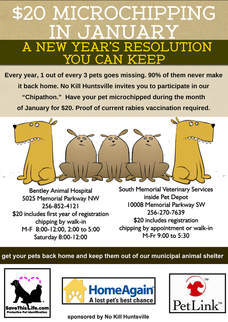 Welcome to 2018. I hope your new year has started off well and that you have been able to shed your holiday stress or any 2017 worries that were dragging you down. If you made any new year's resolutions, I wish you well in your efforts to keep them. If you didn't make any resolutions, I have a few for you to consider regarding companion animals. None of them cost very much and most simply have to do with decisions you make or a small investment of your time. Microchip your pets. Not a day goes by when I am not contacted about someone's beloved companion animal who is missing due to some unexpected event or circumstances. Having a pet go missing or - worse yet - having a pet stolen, can be incredibly stressful for most families, not to mention the pet who is lost. We all presume that because we love our pets and take good care of them that they will never be displaced from us. Life happens. Accidents happen. Doors get left open, gates do not latch, fences get jumped and animals get scared. The sad truth is that the vast majority of animals who are displaced from home never make it back home and their families have no idea what happened to them. In progressive areas, this is not always a death sentence because healthy and treatable animals entering shelters are kept alive. In less progressive areas, the fact that your pet cannot be identified can lead to the death of your pet even if he or she is perfectly healthy, treatable and social to people. Although I recommend that dogs and cats both wear collars with identification (provided the cat collar is a breakaway design to prevent strangulation), there really is no substitute for having your pet microchipped. A microchip is not a GPS tracking device. It is a small ampule about the size of a grain of rice which is injected under your pet's skin at the base of the neck. It contains a unique number, much like a bar code, which can be scanned. Provided your chip is properly registered, the chip can be traced back to you and authorities can get your pet back to you. This helps not only animal control and animal shelter personnel, but also helps veterinary offices and law enforcement authorities. Most microchips are very cheap. You can buy one yourself and have it implanted by your veterinarian. You can also be on the lookout for a local microchipping event like the one going on in the city where I work now. Pets are being chipped for $20 which includes the registration fee. Most people spend that much on a dog or cat toy. It truly may be the best money you ever spent to help your displaced pet get back home to you where he or she belongs. 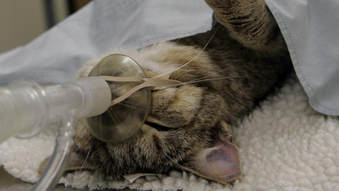 Make a care plan for your pets. Another subject I hear about almost every day is pets who need to be rehomed due to some unexpected event or crisis. Someone dies. Someone is diagnosed with a terminal illness. A house burns down. A job is lost or there is some financial crisis. I have written before about the concept of having a Pet Parent for your pets; I cannot encourage you strongly enough to do this. Much like you make plans for the care of your children in the event something happens to you, please make the same plans for your pets. This cannot be some vague assumption that a family member or friend will step up and take your pets for you and care for them for the rest of their lives. It needs to be a serious conversation to get a solid commitment from someone you know that yes, they will take your pets in the event of your death or your inability to care for your pets. You don't need to go so far as to have someone sign a contract which is legally binding. I do recommend, however that you prepare a list of instructions regarding the transition of ownership of your pets and about their care, providing a copy to your designated Pet Parent. If you died suddenly, how would your Pet Parent get into your home? Where are the veterinary records? Things as simple as what your pet eats and about his or her habits and behavior are important to set out in writing so that the transition from your home to another home is as smooth as can be expected and the stress on your pets is reduced. My cousin has agreed to be the Pet Parent for our dog and she will love him and care for him for all of his days. I would like to think the odds of putting this plan in place are incredibly low. Because we love our dog, we have made plans for his care and to ensure he doesn't end up either being passed around from person to person or end up in an animal shelter where he may be destroyed. Spay and neuter your pets. Many people are surprised to learn the health benefits of having companion animals fixed, not the least of which is an extended life span. If you've ever lost a beloved companion animal to age or disease, you know the heartbreak of that loss. Given the choice, would you add years to your pet's life if you could and keep them healthier? You can through spay and neuter. It's good for your pet. Spaying/neutering helps dogs and cats live longer, healthier lives by eliminating or reducing the incidence of a number of health problems that can be very difficult and/or expensive to treat. Some reports indicate that having your pet fixed can add as much as three years to his or her life. It's good for you. •Spayed/neutered pets are usually better behaved and more calm and affectionate than those that are not spayed/neutered. It also decreases an animal's desire to escape and wander the neighborhood in search of a mate. This decreases the risk of fights, death caused by getting hit by cars, and lost or stolen pets. It's good for the community. Spay/neuter decreases the homeless animal population, reducing the number of animals needlessly destroyed. Some communities have financial assistance programs to help offset costs and some regions offer clinics which do nothing but spay/neuter surgeries at very low rates.  Speak out about issues which relate to companion animals in your community and your state. If you oppose Breed Specific Legislation, let those in positions of authority know how you feel. If you believe the best way to reduce the population of feral cats is through Trap-Neuter-Return programs, support those programs in your own neighborhoods. If you believe that the animal shelters in your community which operate using your tax dollars and donations are not doing all they can to save lives, speak up. Only when you make it clear that you value the lives of homeless animals will those lives become a priority. Saving lives doesn't mean spending more money in a community and it often saves taxpayer dollars. Support local rescue groups and national animal advocacy groups the focus of which are saving lives. There are many multi-million dollar organizations in our society which engage in very visible marketing. If you look at their funding or how they operate, you may find that your donations are used primarily to fund salaries, lobbying and marketing while very little (or none) of your money is actually used to rescue or save animals. If you want to help the cause by making a tax deductible donation, you can do so right where you live or to any nonprofit across the country which is actively involved in being the change. If you cannot donate money, you can always donate your time by volunteering at a local no kill shelter or with a local rescue group. You can also donate common items you may have in your home which you no longer use such as old towels, old blankets, newspaper, used dog or cat beds, etc. Adopt or rescue your next companion animal. Although many people have come to believe that shelter and rescue animals are somehow "damaged," that is rarely the case. The truth is that most of them are simply homeless and are victims of our poor choices. If you have your heart set on a particular breed for some reason, there's nothing wrong with that. Seek out a breed specific rescue group or just a specific breed of animal using Petfinder or a comparable web site. There are countless reputable breeders across our country, many of which breed animals for the sheer love of the breed and to perpetuate breed standards. If you're considering buying an animal, however, ask yourself this: do I really need to spend hundreds or thousands of dollars on a companion animal when I can save a life instead? Consider fostering an animal. There are people who may not want the long-term commitment of a pet but who are great with pets. Do you not have a pet because you think you are too old? Foster. Do you not have a pet because you want the freedom to travel a lot? You can foster. Do you want to help a deployed troop so he does not have to surrender his beloved dog to the shelter? Fostering that dog means he can stay local and be returned to his owner when the deployment ends. Do you want to help neonatal puppies or kittens who need regular bottle feeding for a few weeks until they can eat solid food? Yep. You can foster. (image of Baby Watson courtesy of Lori Anne Truman)
I had three separate conversations with contacts of mine last week regarding the phrase “no kill” and the word “euthanasia” as it relates to shelter animals. In one conversation, I was told that some organizations refuse to give grant money to any organization which refers to itself as “No Kill.” I use that phrase regularly and do so without hesitation. It is on the public radar and I think people are smart enough to understand that the phrase describes a culture. In another conversation, I was told about an animal welfare coalition in Colorado which does not allow members which use the word “kill” to describe what happens to shelter animals. The exact quote I was told was this: “We refuse to use the term ‘kill’ to describe agencies and their process of thoughtful euthanasia.” In the third conversation, I was told about a shelter director in the state where I live who uses the phrase “necessary euthanasia.” She boasts a “euthanasia” rate of about 8% when, in fact, it is routinely around 30-40% and was higher than 50% in May alone. More than half the animals entering her facility that month did not make it out alive even though hers is a non-profit organization with a huge donor and support base. I have often wondered if donors know what they are paying for. Enough already. The dictionary definition of euthanasia is easily understood: the act or practice of killing or permitting the death of hopelessly sick or injured individuals (such as persons or domestic animals) in a relatively painless way for reasons of mercy. I’m not sure exactly when it was in the history of animal sheltering in America that we first began to use the word “euthanasia” to describe the destruction of healthy and treatable animals for space or convenience in our tax-funded animal shelters. Regardless of when this practice began, it has continued to present day in earnest and it does not serve us well as a society. Words and phrases have common meanings which help us all communicate and do so fairly effectively. When we take those words and we distort them to excuse or condone our behavior, we are doing a disservice to our values and to how we function collectively. The fact that healthy and treatable animals are destroyed in our nation’s shelters, along with animals who are injured or irremediably ill, and we dare call it all euthanasia should be a source of public shame for us all. We consider ours a progressive society. We talk about dogs being “man’s best friend.” We hold our values about companion animals above those of other cultures, as if we are somehow more evolved. We are not. And we should be ashamed of ourselves. When we destroy perfectly savable animals in our shelters, we are doing just that. We are killing them. We are destroying them. We are not euthanizing them. The act has nothing at all to do with mercy and everything to do with complacency. Our history has shown that the destruction of these animals is not necessary. It continues to take place using our money whether we are aware of it or not. And it just doesn't have to be that way. Killing animals is a choice. Saving lives is a choice. The growing number of communities walking away from the status quo and functioning in new ways more consistent with our values in our society prove daily what can happen with some bravery and getting educated on proven programs which work anywhere and everywhere they are implemented. Yesterday was the anniversary of the date when my husband and I had our beloved dog euthanized. July 4th of 2016 was one of the worst days of our lives and the very worst day of our 16 year relationship with our dog. No one gets to stay, human or animal. It was the circumstances of his passing due to some issues with receiving adequate and timely veterinary care which haunt us now, the memories of which we hope will become less vivid in time. Our dog had cancer which had moved to his brain and which was causing grand mal seizures which we believed could not be treated or stopped. We euthanized him for reasons of mercy and to keep him from suffering. 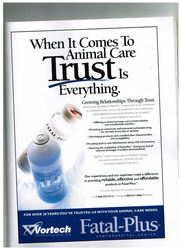 When healthy and treatable animals die in animal shelters, whether they are funded by tax dollars or donations or both, it is not euthanasia. To compare that process with the heart wrenching decision made by loving animal caregivers and families every day to prevent suffering is to devalue the lives of all of the animals in our society. If your beloved dog or cat ended up in an animal shelter due to no fault of your own and was destroyed, would you call it “euthanasia”? No. You would not. If we are ever to reform our broken animal sheltering system in America, we have to speak plainly and not sugar coat what is taking place using our tax dollars and our donations. Only then can we reach the rest of the public which does not realize what is taking place in their communities using their money and their donations and only then will we be able to reform our broken animal sheltering system to make the killing stop. If you don’t know what takes place at the animal shelter in your community using your tax dollars, ask for statistics and learn for yourself what is really happening. No matter what they are calling it. |
AuthorI am an animal welfare advocate. My goal is to help people understand some basic issues related to companion animals in America. Awareness leads to education leads to action leads to change. Archives
July 2024
Categories
All
image courtesy of Terrah Johnson
|

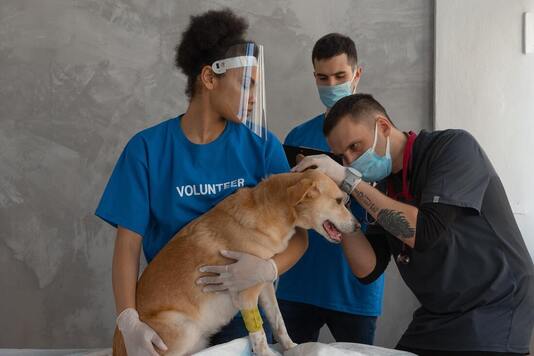
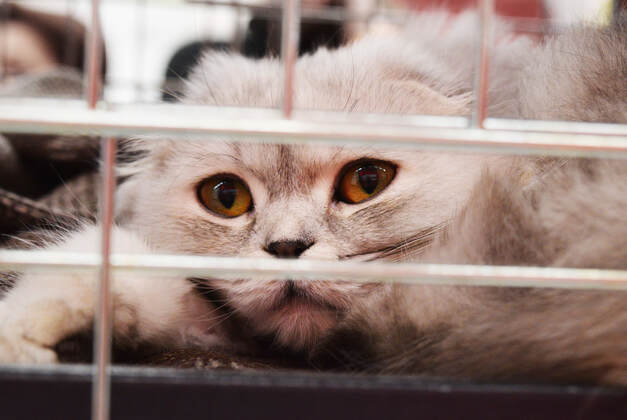
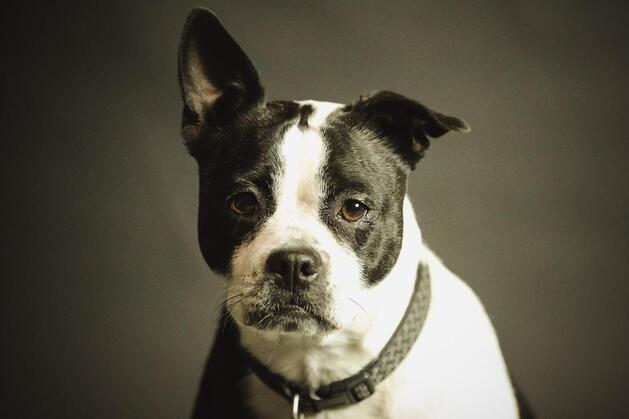


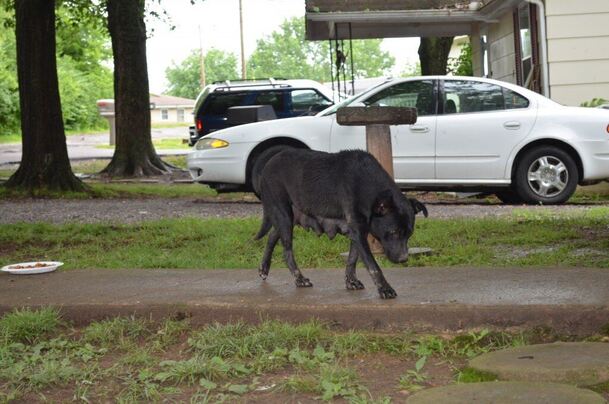

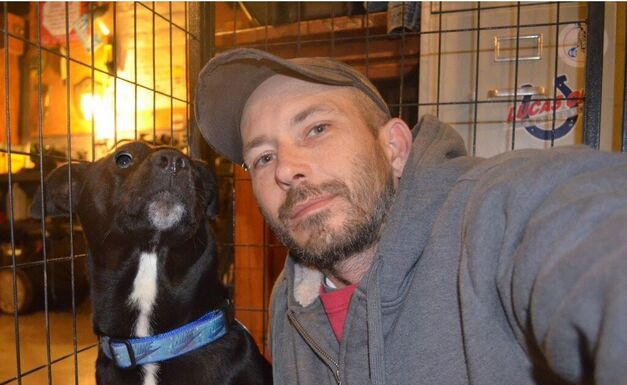

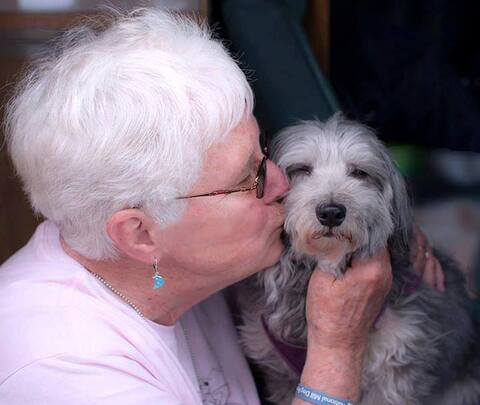
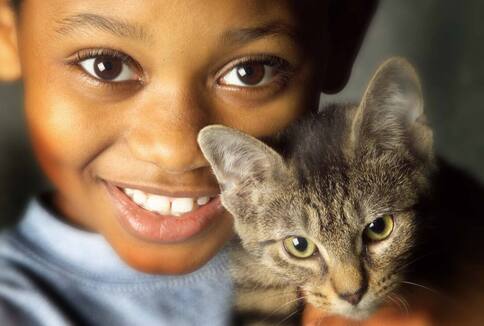


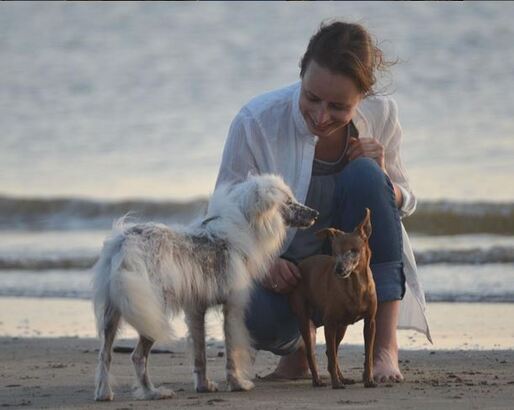


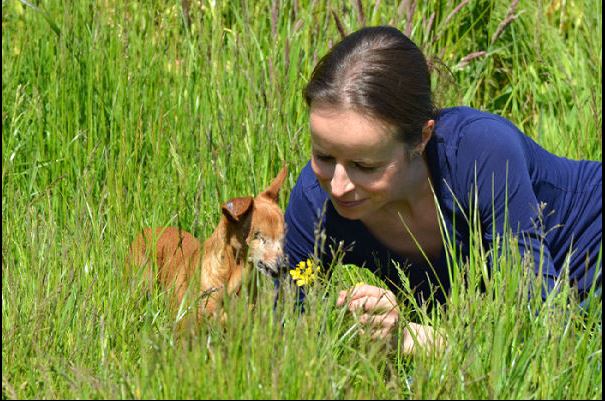

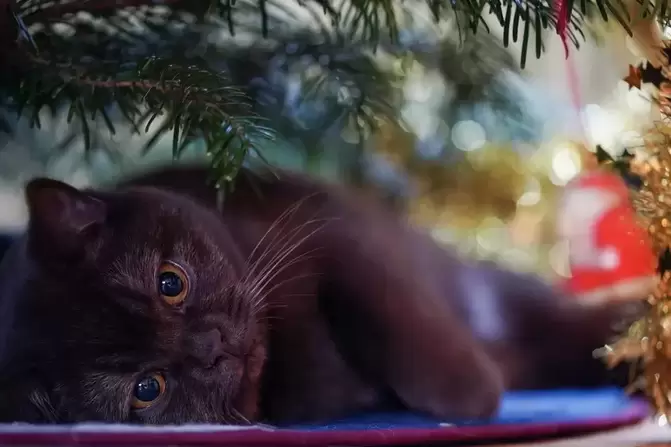
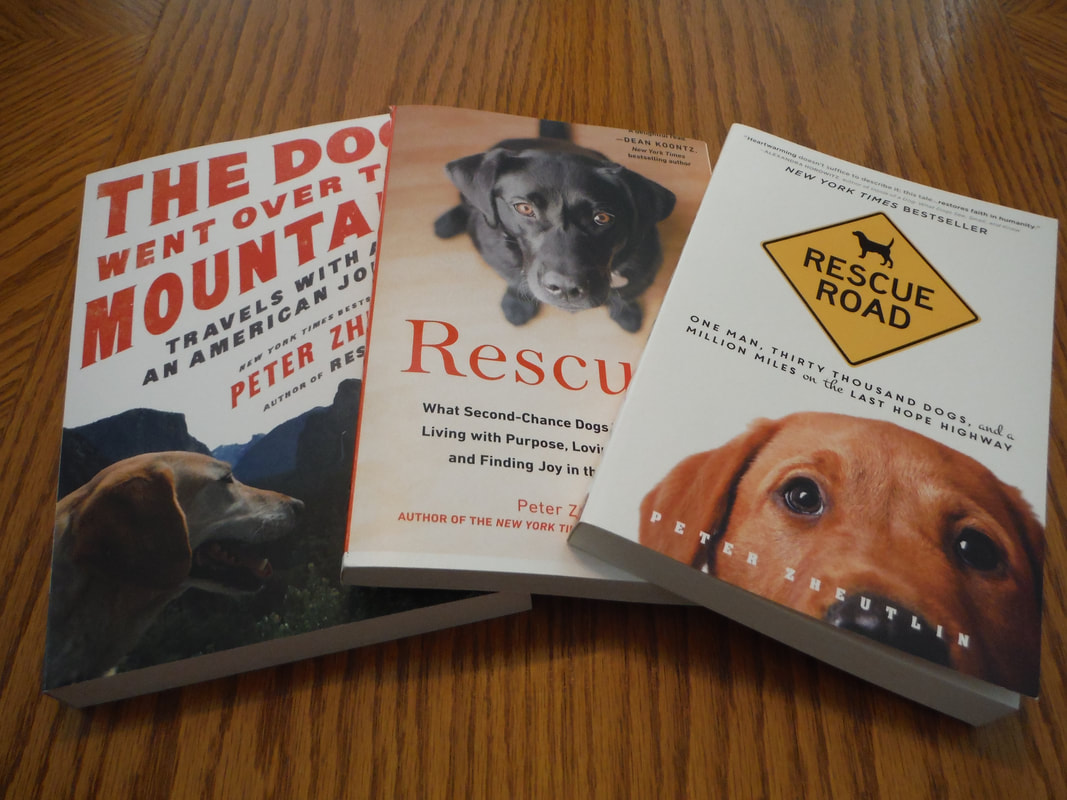

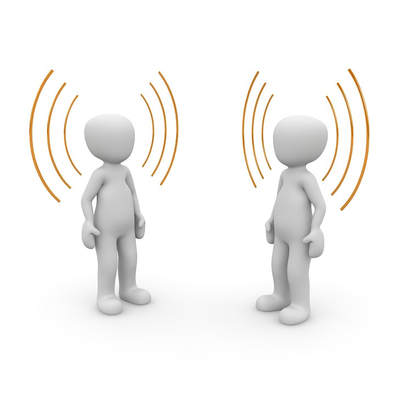

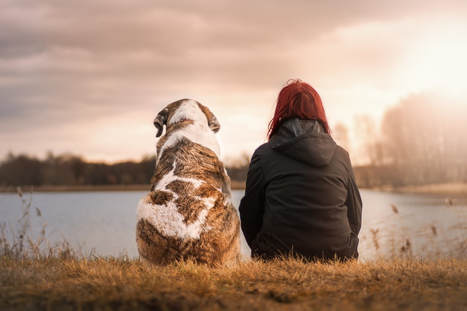


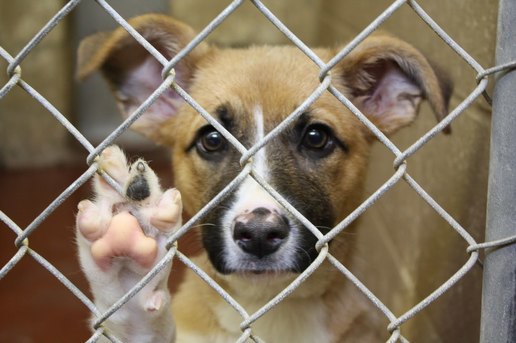
 RSS Feed
RSS Feed